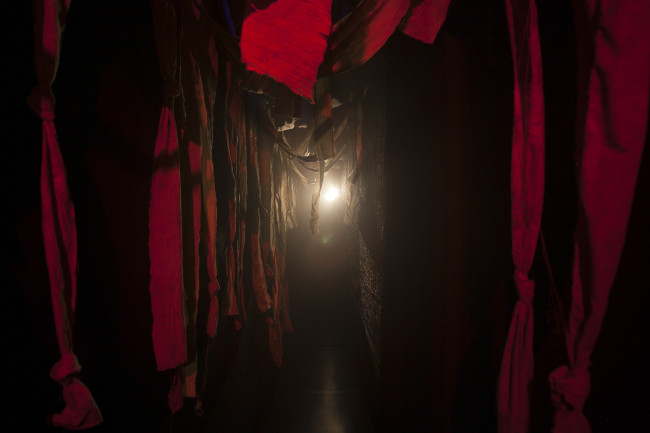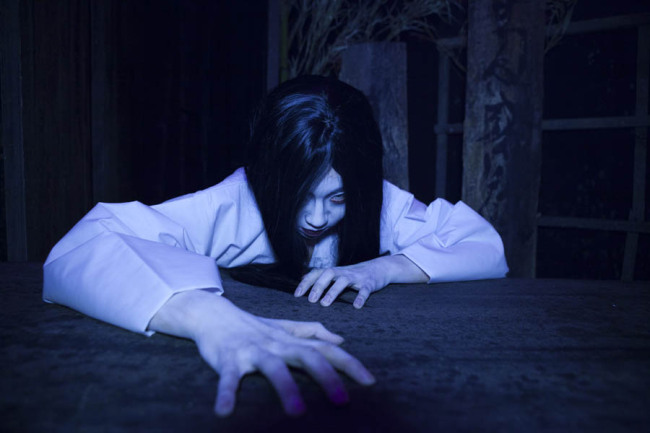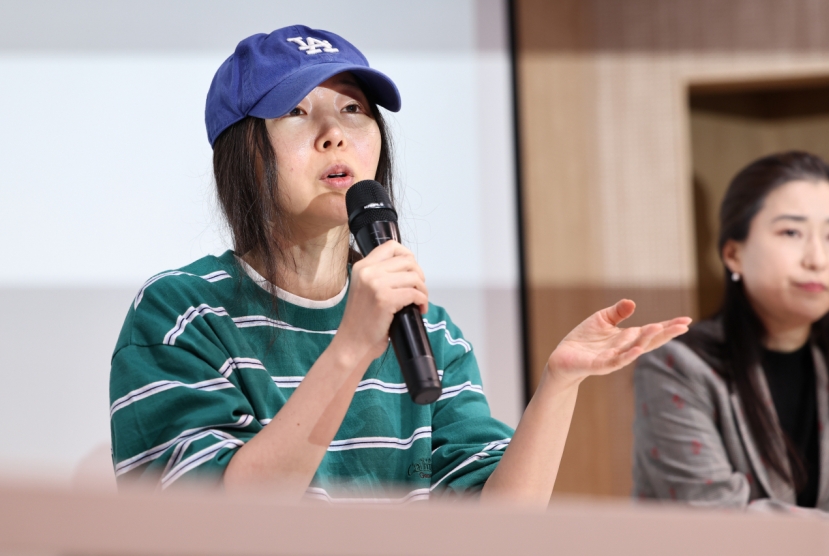[Weekender] Spine-chilling horror for mid-summer goosebumps
Among Koreans, scary activities are staple way to escape summer heat
By KH디지털2Published : July 17, 2015 - 17:47
Haunted houses, horror films and even venturing into abandoned estates: such fear-inducing activities have long been a way for many Koreans to escape -- or at least momentarily forget -- the country’s sweltering summer, and chill the spine.
Between the months of June and August every year, Korean cinemas see mass premieres of horror flicks, while a number of Halloween-ish festivals take place, with zombie marathons, goblin-themed mazes and booths where professional makeup and costume artists help participants transform into disfigured ghouls.
Between the months of June and August every year, Korean cinemas see mass premieres of horror flicks, while a number of Halloween-ish festivals take place, with zombie marathons, goblin-themed mazes and booths where professional makeup and costume artists help participants transform into disfigured ghouls.

One attraction that newly opened is a haunted house in Seoul’s Hyehwa-dong. Called “House of Gwisin” -- “gwisin” being specters that appear in Korean fables -- the darkened shack is filled with narrow corridors, eerie red lighting and gwisin who jump out from behind doors or grab your ankles as you tremble by. And despite the bloodcurdling screams that echo from inside, visitors wait eagerly in long lines to enter, said May Jeon, an employee at Culture Mine, the venue’s organizer.
“People get pretty terrified in there, but they always laugh when they come out. The only complaint that most people have is that they wish it lasted longer, and was even scarier,” said Jeon. “They say it feels like their body temperatures have dropped a few degrees.”
Some medical professionals explain this perceived cooling effect in relation to the body’s physiological reaction to fear.
Because fear triggers the release of adrenaline and accelerates the heartbeat, it causes perspiration, they say. When the sweat evaporates, it can cause body temperature to drop, albeit minimally. Others say that because horror experiences precipitate a state of intense anxiety and concentration, people simply forget the heat.

Kim Joon-bum, a self-acknowledged horror nut, likes to focus on the collective aspect of horror activities.
“It’s an experience that you can share with your friends,” said Kim, who is also the owner of a zombie-themed bar in Hongdae called Noneun Zombie. The bar, in addition to serving finger-like sausages with ketchup blood and shots with fake teeth in them, features waiters who appear out of the dark, dressed up as zombies. When the customers get over their initial fear, they end up having fun with the zombies, dancing and drinking together, said Kim.
“Horror activities are something you participate in, rather than just observe,” he said. “They provide an entertaining way to share and connect.”
Still more adventurous fans of the macabre go exploring in abandoned estates that many believe to be haunted by restless spirits.
Some famous sites in Korea include the Youngdeok haunted house, which is said to hold ghosts from the Korean War, and Neulbom Garden, a deserted restaurant where it is said the clinking of dishes can still be heard. The Gonjiam Psychiatric Hospital, which, according to local legend, closed down over a decade ago when patients started to die inexplicably, was even featured on CNN Travel as one of the “freakiest places on the planet.”
By Rumy Doo (bigbird@heraldcorp.com)



![[Herald Interview] 'Amid aging population, Korea to invite more young professionals from overseas'](http://res.heraldm.com/phpwas/restmb_idxmake.php?idx=644&simg=/content/image/2024/04/24/20240424050844_0.jpg&u=20240424200058)















